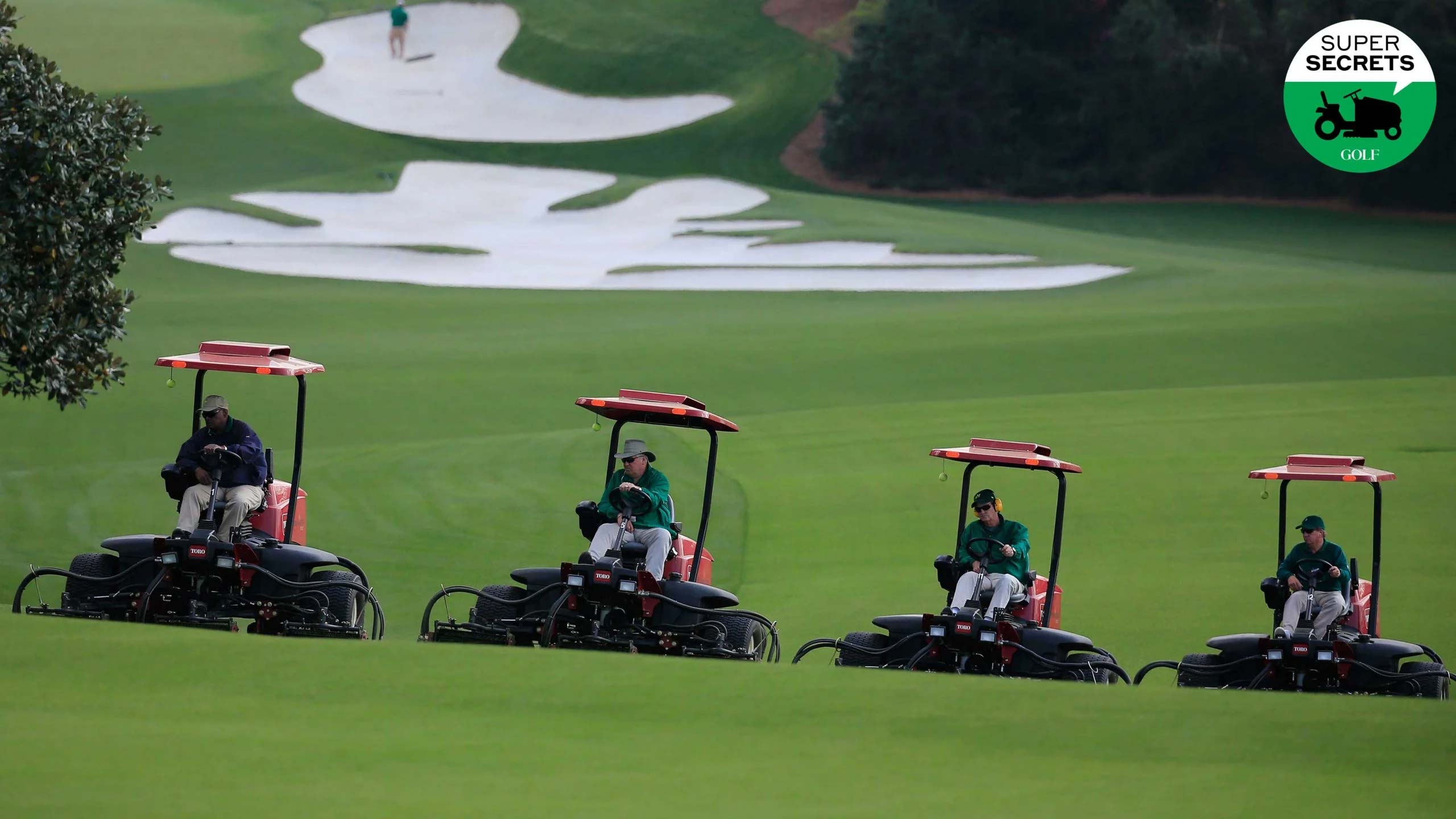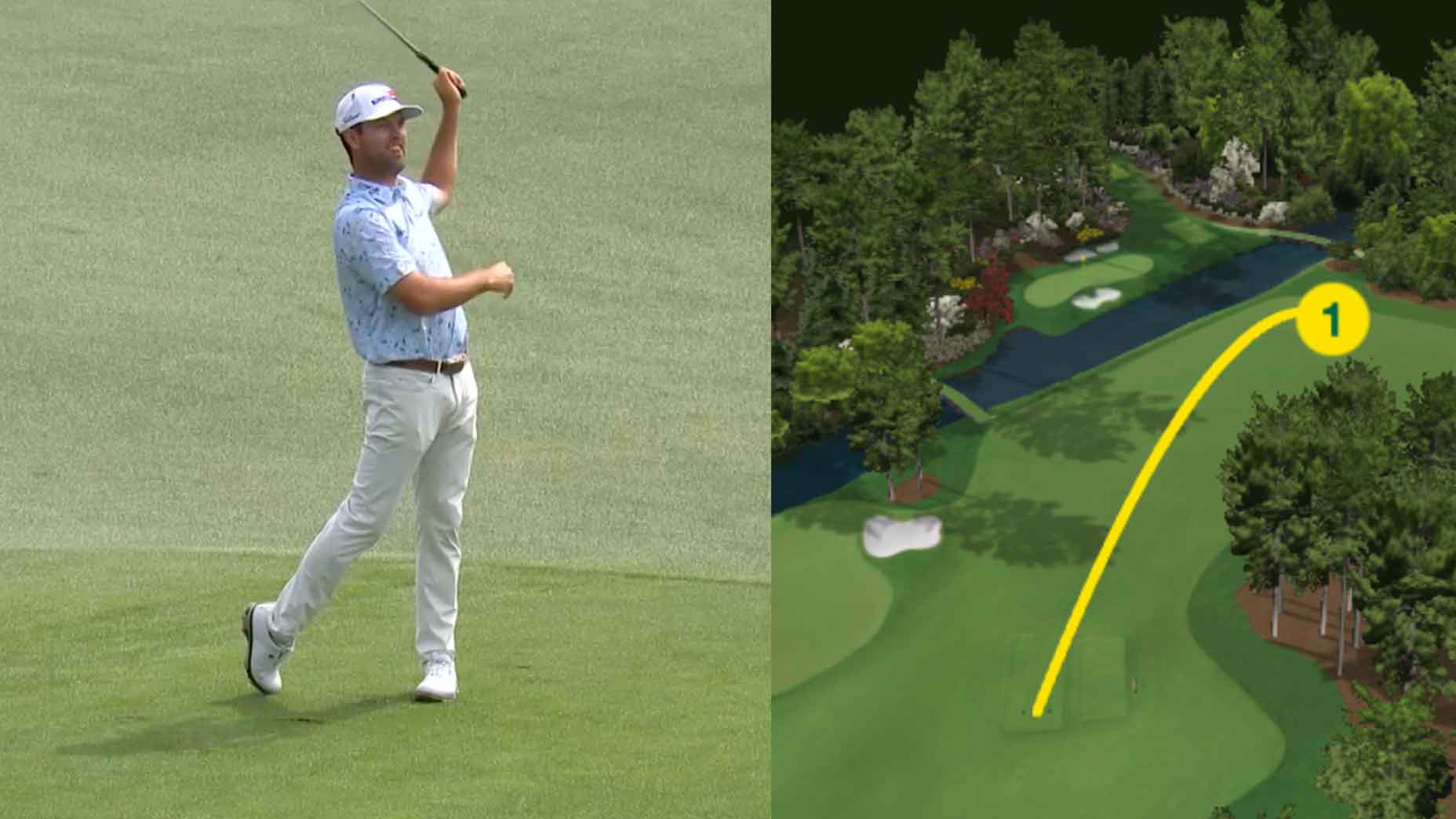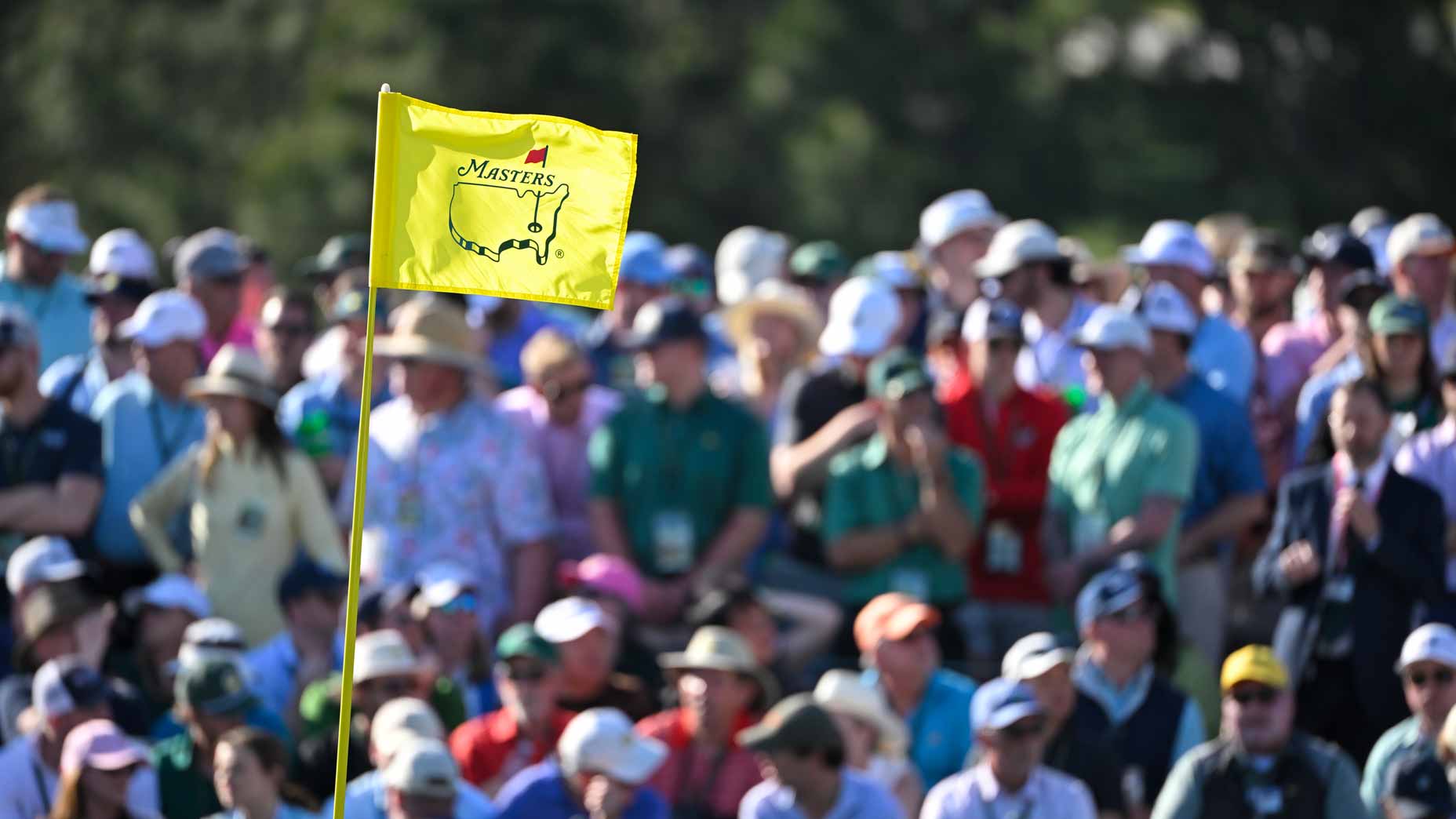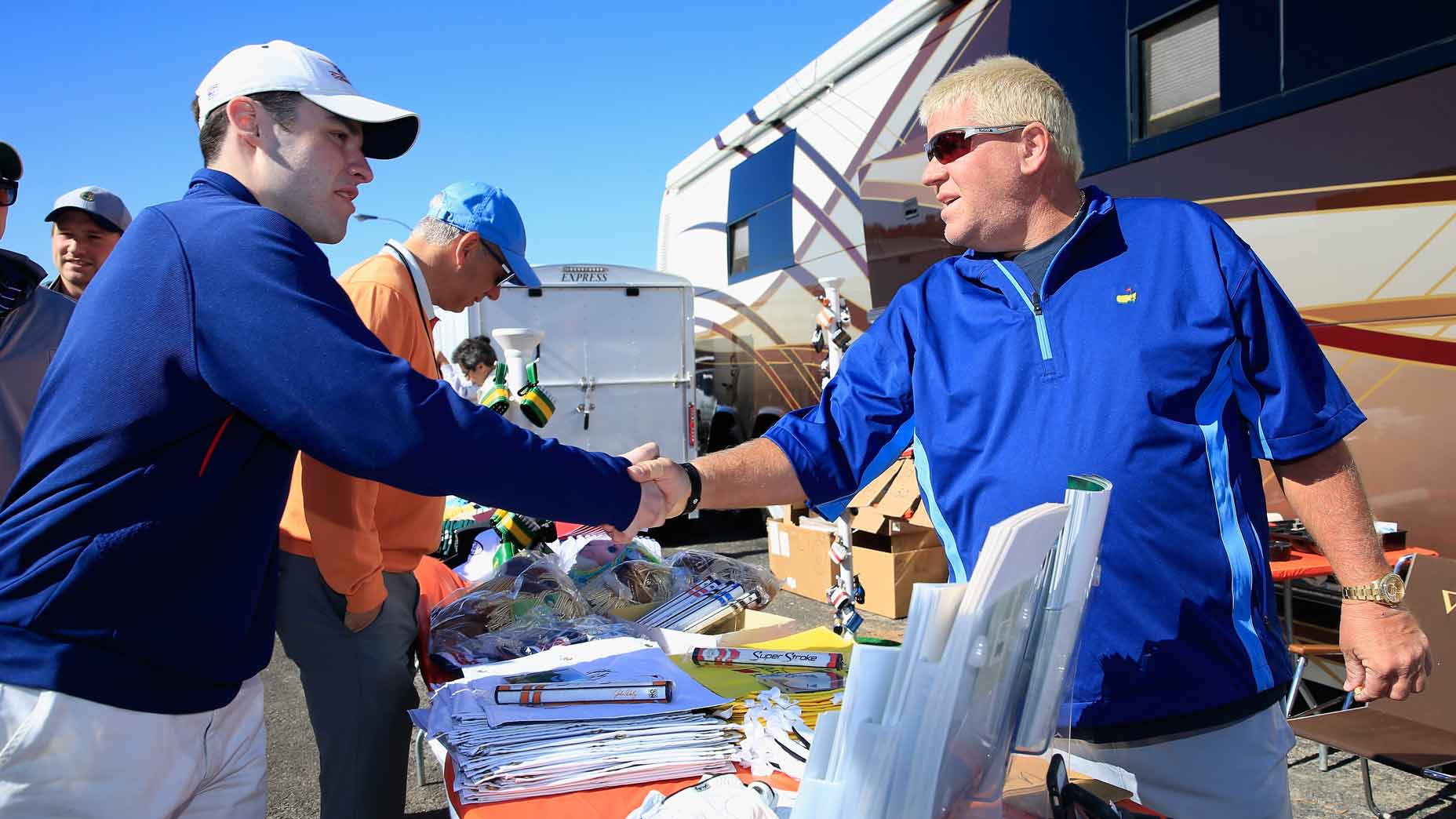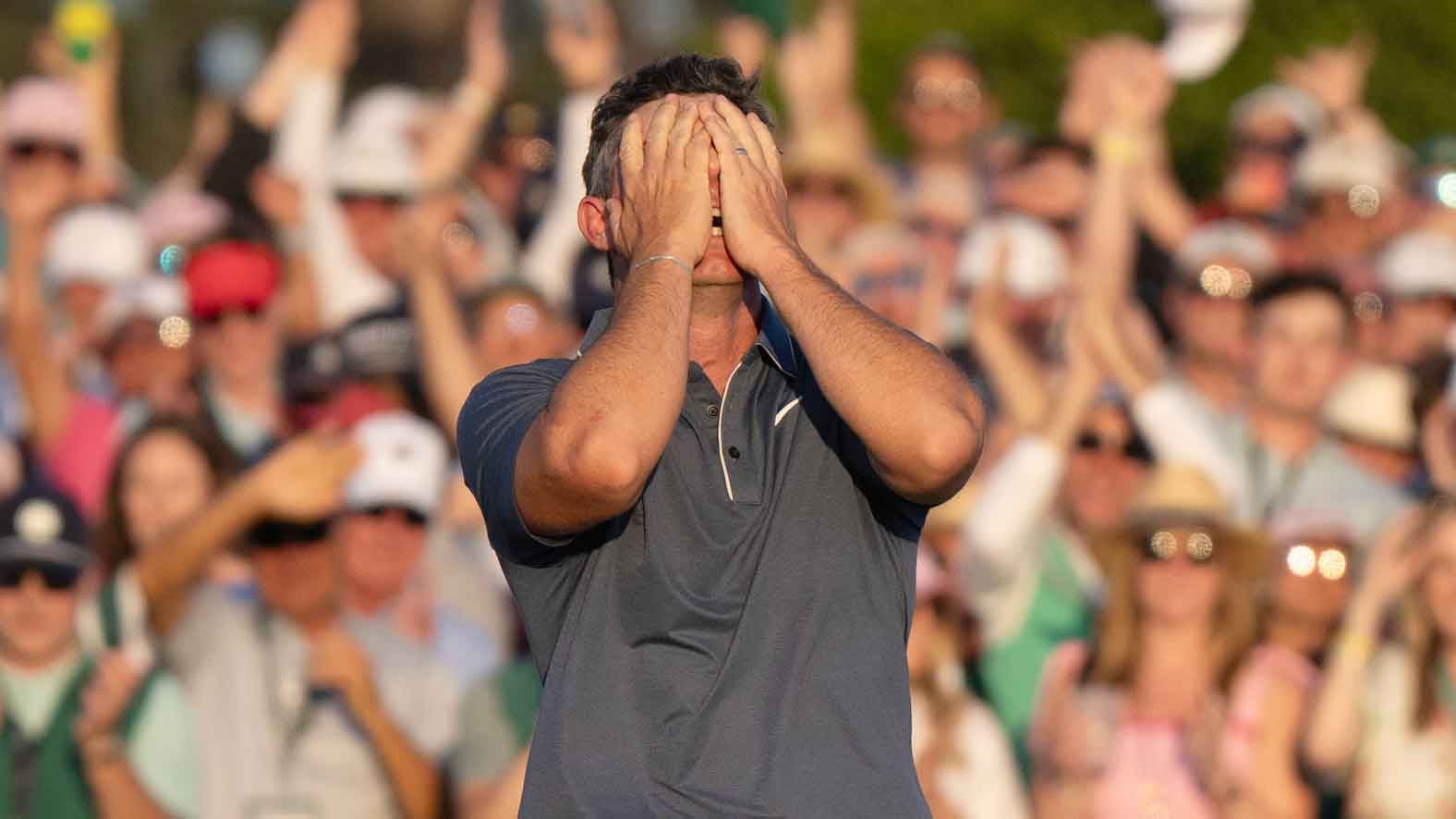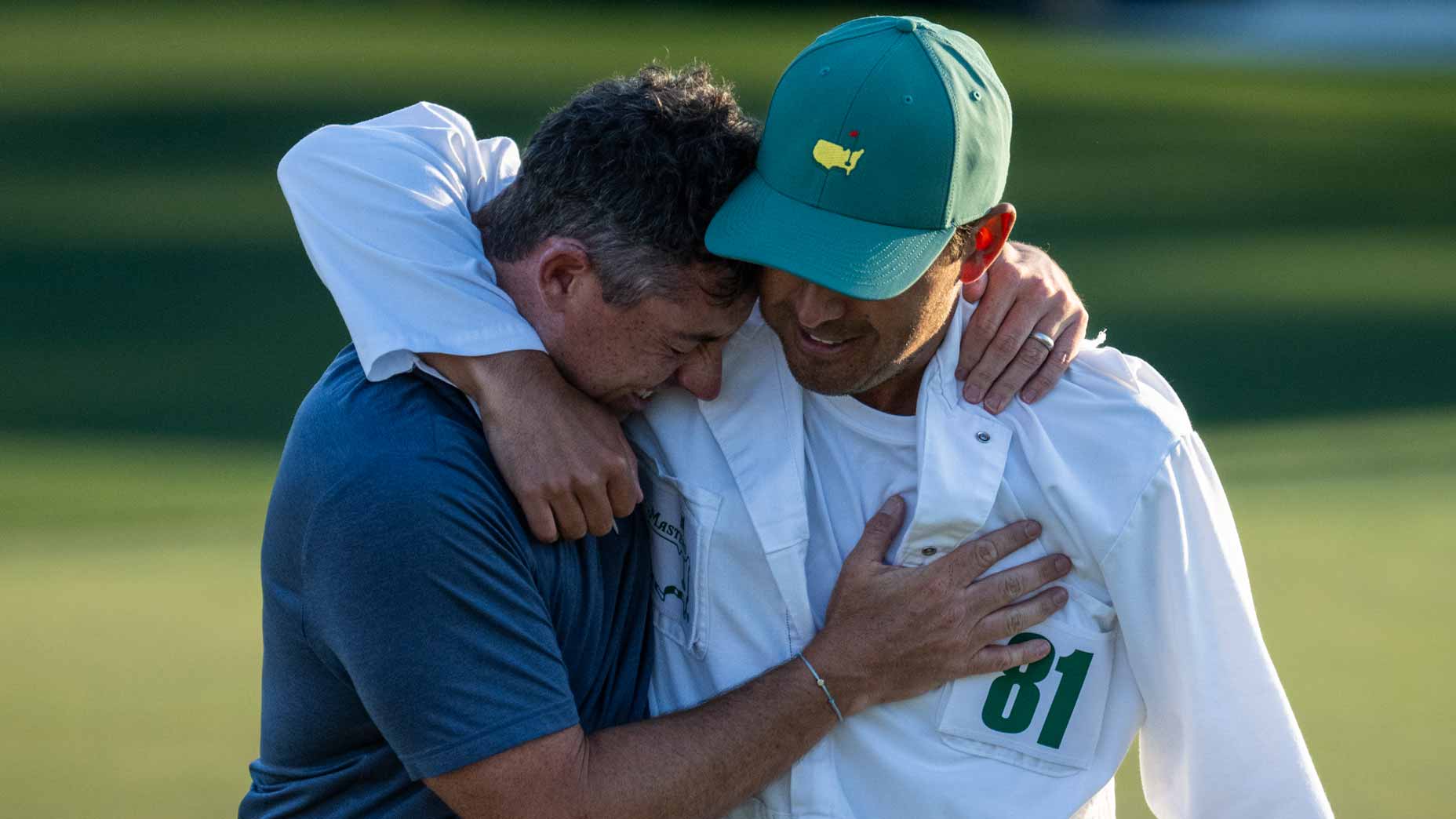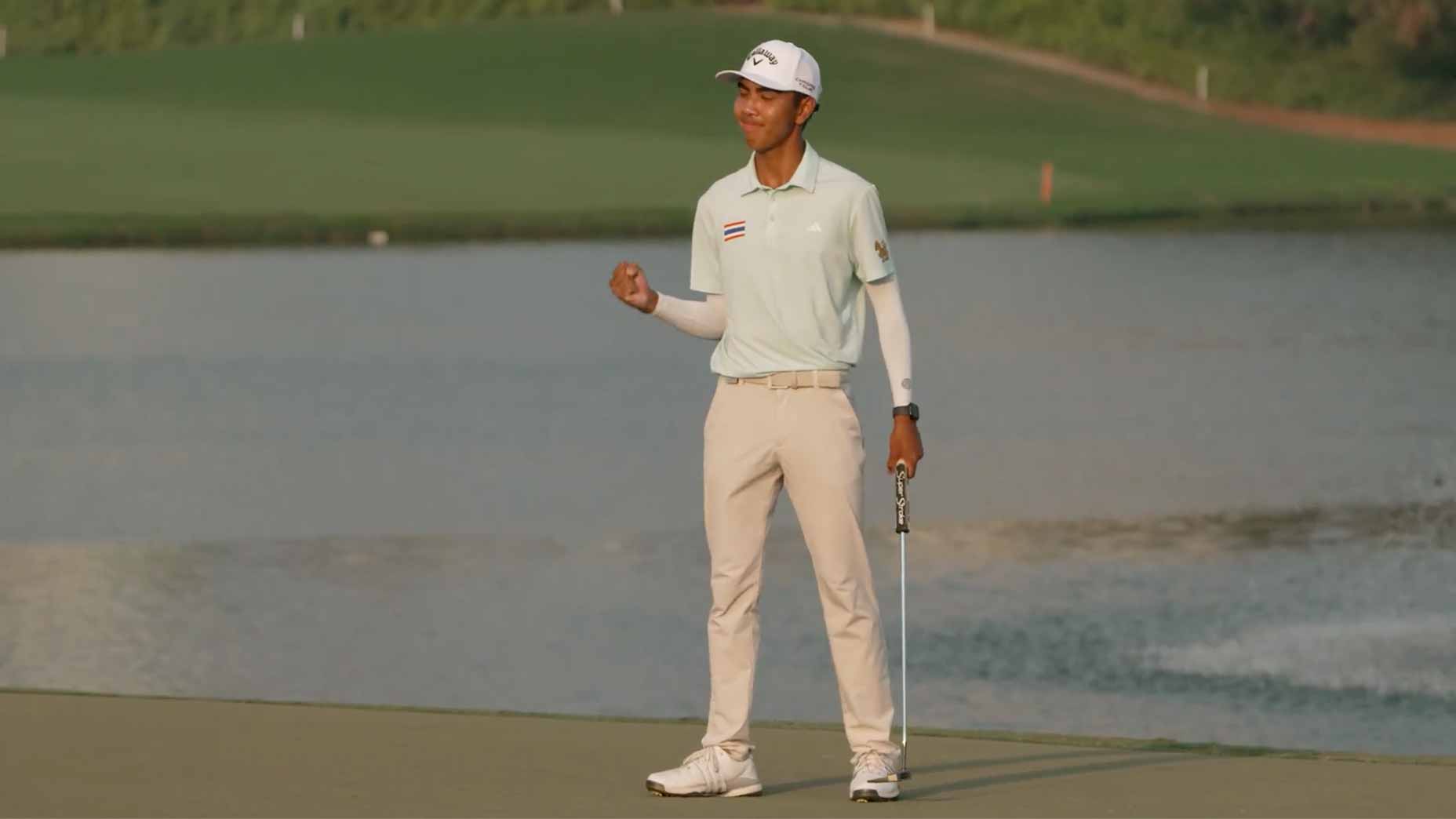AUGUSTA, Ga. — At the Masters, everything is green.
You want a list? Let’s make a list. The members’ jackets. The needles in the giant pine trees. The trash bags. The cookie wrappers. The patrons’ pants. The pros’ shoes. The caddies’ hats. The scoreboards and the camera towers and the divot seed and the trash cans and the foldable chairs. All green.
Secrets of the Augusta National grounds crew: What it takes to get the course Masters-readyBy: Josh Sens
Mostly it’s the grass that’s green. The tee boxes and the fairways and the well-manicured expanses that sprawl across the course. Augusta’s grass is so green that it has changed expectations across the entirety of the golf world. It’s the green standard against which all other courses attempt to measure up.
This week, everything is extra green, because the club has guests in town. Guests with cameras. Everything is green, ironically, except the greens themselves. And, believe it or not, that seems like it’s exactly the way Augusta National wants it.
‘That purplish baked look’
Before this week, Will Zalatoris had never played Augusta in tournament conditions. But he was an instant admirer of the way the greens were playing.
“It’s really cool, especially on a Monday, to see that greens get that purplish, baked look to them,” Zalatoris said early in the week. “Balls are bouncing like crazy, so it’ll be fun to see.”
By Thursday afternoon, he was proven a prophet. Viewers turned on their broadcast to find that purple tinge populating several putting surfaces. The best golfers in the world struggled to hold the increasingly firm greens with their approach shots. Once they found the greens, they putted defensively — or ended up wishing they had.
Two putts in particular illustrated the challenges of the crispy greens. In the first instance, U.S. Amateur champ Tyler Strafaci pulled flatstick from the back fringe. His putt rolled onto the green, down the slope and all the way off the front, leaving himself 30 yards back to the hole.
In the second instance, Bernd Wiesberger hit the par-5 15th green in two — only to putt his eagle try all the way off the front edge and into the water. (He two-putted his second time around to secure a particularly memorable bogey.)
Wow. Bernd Wiesberger had an eagle putt on 15 and put it in the water. So his next shot was a par putt from the same spot. pic.twitter.com/D1P8kd8mfl
— Cork Gaines, Ph.D. (@CorkGaines) April 8, 2021
As the day wore on, the conditions got tougher. Last November, Dustin Johnson won at 20-under par. This week, that score seems extremely unlikely. Nearly every player who shot under par did so early in the day. (The exception was Justin Rose, who seemed to have gotten a tee time on an entirely different golf course.) The scoring average soared over 74.5. And nearly every player who came off the course praised the conditions.
‘They’re getting pretty baked’
Former Masters champ Ian Woosnam said the greens were playing as fast as he’s seen them in 30 years.
“It looked like glass,” he said.
“If I could choose, I would say no rain,” said Corey Conners after he opened with a one-over 73. “Keep the conditions really firm and fast and continue to get firmer and faster. … The golf course is in amazing shape. It’s playing, I’m sure, just as all the players want it right now.”
Pro’s Masters shank reminder of par-3 12th hole’s long history of rattling playersBy: Alan Bastable
Michael Thompson, who played in the first group of the day, said the greens were already crisping up during his round. “The golf course is playing tough. The greens are very, very firm. They’re getting pretty baked,” he said.
As the day wore on, the players came off the course gradually more wearied. Sergio Garcia said he felt like he’d gone 12 rounds with Evander Holyfield, but he praised the course setup.
“The greens are firm and fast, which is the way they should be,” he said.
“They’re extremely firm, extremely fast, and inside 10 feet, it’s pretty dicey,” Cameron Champ said.
“It’s pretty obvious on TV with how crusty the greens are getting,” Rory McIlroy added.
“It was a battle,” Jon Rahm said. “There was not one moment where I felt relaxed out there.” He categorized the difficulty as an 8.5 or 9 out of 10.
Why do the greens look purple?
I reached out to a couple knowledgeable superintendents to ask why the greens get this particular tinge to them.
“That’s what bentgrass looks like when it’s thirsty,” one response read. (These guys preferred to stay anonymous. This is Augusta we’re talking about, after all.)
You'll hear a bunch of players describing the greens as "purple" this week and this picture shows exactly why — check out the bright green of the fairway vs. the color of the putting surface.
— Dylan Dethier (@dylan_dethier) April 6, 2021
Things are getting CRISPY and we like that pic.twitter.com/hlqzTBxrBr
The supers were in general agreement that the coloration means about what you’d expect: This is what bentgrass greens look like when they’re slightly dried out. The purplish shade is common with cool-season grades, and it can mean a sign of wilting. But purple isn’t in itself a problem. Brown, on the other hand, can be a sign of danger.
Years ago, they suggested, it was more common to see major championship courses push their greens to the edge. Shinnecock Hills, for instance, boasted brown greens by the time Retief Goosen walked off a winner.
This week, they expect, Augusta National has far more margin for error. There’s rain in the forecast. Agronomic practices have improved dramatically. And this is Augusta National.
Masters vets saw this coming
Whether the greens are green, brown or purple is a matter of personal taste, I suppose. But every golfer who played a practice round seemed in universal agreement that this week would be fast and furious. After one practice round, Adam Scott said the greens “had that brown tinge.” He was eager for the challenge. “If that’s a sign of things to come, we’ve got to buckle up for this week.”
Phil Mickelson urged the tournament organizers to protect the course by firming up the putting surfaces. “If you have soft receptive greens, it’s like having a military and then not giving them any weapons, right? It’s defenseless,” he said.
Rory McIlroy flagged down Fred Couples the day before the tournament started. “Have you ever seen the greens like this on Wednesday?” he asked.
“Five times in a row I said no,” Couples said. “He was laughing because he’s been here a bunch, so I think if it stays like this, come Friday, Saturday, Sunday, honestly a 70 or 71 will be a heck of a score.”
Scott was right. The field needed to buckle up. Mickelson was right. This course had weapons. And Couples was right — he was just off by a day. On Thursday, 70 or 71 was already terrific.
And this Masters is just getting started.

